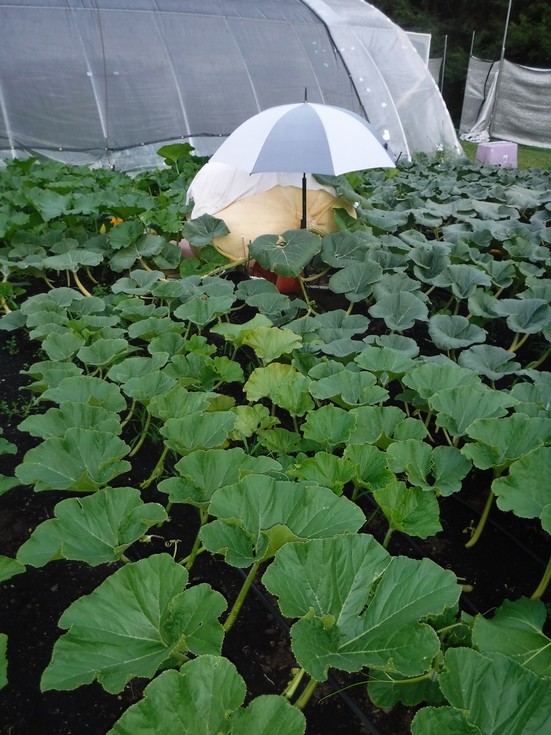| |
|
Entry Date
|
Nick Name
|
Location
|
|
Saturday, August 10, 2019
|

|
Matt D.
|
Connecticut
|
 |
Entry 171 of 210 |
 |
|
|
|
CYVD (Cucurbit Yellow Vine Decline)
Do you see those fait green colored leaves toward the center of the image? This is a sad sight to see, because this is characteristic CYVD which basically means the end of any pumpkin growth.
As I was doing a routine plant inspection and I noticed this issue and immediately after seeing it, identifying it, and taking this picture, the infected vine was removed. Since this was the first sign of the disease I hoped by being aggressive I could save the rest of the plant. However, this was not the case:-(
Cucurbit Yellow Vine Decline (CYVD) I feel is a bigger problem than is being currently recognized in New England. I am seeing it on multiple farms in addition to giant pumpkin growers. However, I have noticed it seems to be initially occurring at times of heat waves and growers are misdiagnosing the issue as heat related. Since blossom drop is common with high heat this is also a characteristic of CYVD (commonly seen on summer squash).
Needless to say, my pumpkin has completely stopped growing so the hope is that it will make it to the first weigh-off in the area the Woodstock Fair. However, approaching this problem from a scientific stand point I had the states head plant pathologist and lab diagnostician come out to collect leaves, vines and fruit samples to take back to the lab. While a specific bacterial species diagnosis was not able to be determined the likely agent was connected with CYVD.
Also, importantly for growers in the area, this issue was documented formally in the lab in hopes of generating the potential for future studies. One issue with grower only field diagnosis is that it does not become formally documented and without this formal documentation it is not counted as a potential problem. By initiating a conversation the hope is that there could be studies to better understand this disease in addition to increased awareness between scientist and extension agents in the area.
|
|
|



